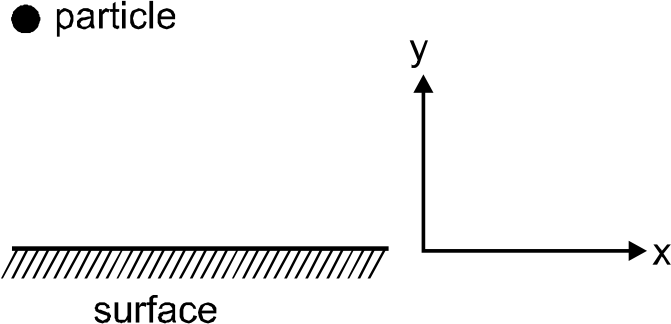A body starts with a velocity (2ˆi+3ˆj+11ˆk)m/s and moves with an acceleration (5ˆi+5ˆj−5ˆk)m/s2. What is its velocity after 0.2sec?
7ˆi+8ˆj+6ˆk
2ˆi−3ˆj+11ˆk
3ˆi−4ˆj−10ˆk
3ˆi+4ˆj+10ˆk
The correct Answer is:D
ˆv=ˆu+ˆa.t
Topper's Solved these Questions
- BOOK - NARAYNACHAPTER - MOTION IN A PLANEEXERCISE - Level-II(C.W)45videos
MOTION IN A PLANE
- BOOK - NARAYNACHAPTER - MOTION IN A PLANEEXERCISE - Level-III(C.W)48videos
MOTION IN A PLANE
- BOOK - NARAYNACHAPTER - MOTION IN A PLANEEXERCISE - C.U.Q36videos
MOTION IN A PLANE
- BOOK - NARAYNACHAPTER - MECHANICAL PROPERTIES OF SOLIDSEXERCISE - LEVEL-II (H.W)24videos
MECHANICAL PROPERTIES OF SOLIDS
- BOOK - NARAYNACHAPTER - MOTION IN A STRAIGHT LINEEXERCISE - Level 2 H.W29videos
MOTION IN A STRAIGHT LINE
Similar Questions
The velocity of an object at t =0 is →v0=−4ˆj m/s . It moves in plane with constant acceleration →a=(3ˆi+8ˆj)m/s2. What is its velocity after 1 s?
View SolutionA particle P is at the origin starts with velocity u=(2ˆi−4ˆj)m/s with constant acceleration (3ˆi+5ˆj)m/s2. After travelling for 2s its distance from the origin is
View Solution
Knowledge Check
- Question 1 - Select One
A body of mass 3 kg moving with a velocity (2ˆi+3ˆj+3ˆk) m/s collides with another body of mass 4 kg moving with a velocity (3ˆi+2ˆj−3ˆk) m/s. The two bodies stick together after collision. The velocity of the composite body is
A17(4ˆi+6ˆj−3ˆk)B17(18ˆi+17ˆj−3ˆk)C17(6ˆi+4ˆj−6ˆk)D17(9ˆi+8ˆj−6ˆk) - Question 2 - Select One
A force of (5ˆi+6ˆj) N makes a body to move on a rough surface with a velocity of (4ˆj−2ˆk) m/s. What is the power?
A8 unitB13 unitC14 unitD24 unit - Question 3 - Select One
A constant force of (2ˆi+3ˆj+5ˆk) N produces a displacement of (3ˆi+2ˆj+2ˆk) m. Then work done is
A5 jB15 jC22 jD50 j
A mosquito is moving with a velocity →v=0.52t2ˆi+3tˆj+9ˆkm/s and accelerating in uniform conditions. What will be the direction of mosquito after 2 s?
View SolutionA particle of mass 2kg is moving in free space with velocity →v0=(2ˆi−3ˆj+ˆk)m/s is acted upon by force →F=(2ˆi+ˆj−2ˆk)N. Find velocity vector of the particle 3s after the force starts acting.
View SolutionIf angular velocity of a point object is →ω=(ˆi+ˆ2j−ˆk) rad/s and its position vector →r=(ˆi+ˆj−5ˆk)m then linear velocity of the object will be
View SolutionA particle moving with velocity (2ˆi−3ˆj) m/s collides with a surface at rest in xz–plane as shown in figure and moves with velocity (2ˆi+2ˆj) m/s after collision. Then coefficient of restitution is :
 View Solution
View SolutionA particle moves with a velocity (5ˆi−3ˆj+6ˆk) m/s under the influence of a constant force →F=(10hsti+10ˆj+20ˆk)N. The instantaneous power applied to the particle is
View Solution

